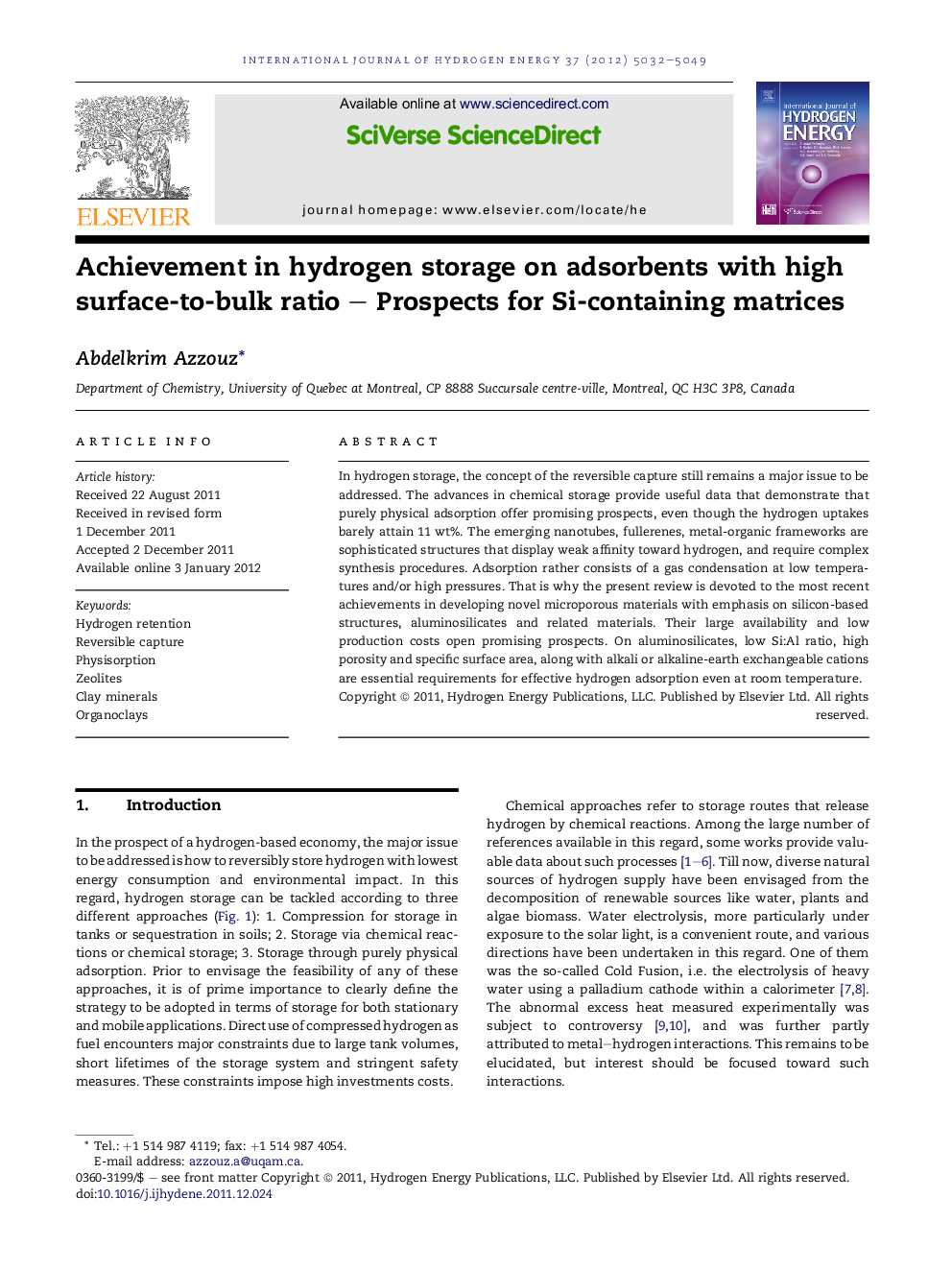| Article ID | Journal | Published Year | Pages | File Type |
|---|---|---|---|---|
| 1271521 | International Journal of Hydrogen Energy | 2012 | 18 Pages |
In hydrogen storage, the concept of the reversible capture still remains a major issue to be addressed. The advances in chemical storage provide useful data that demonstrate that purely physical adsorption offer promising prospects, even though the hydrogen uptakes barely attain 11 wt%. The emerging nanotubes, fullerenes, metal-organic frameworks are sophisticated structures that display weak affinity toward hydrogen, and require complex synthesis procedures. Adsorption rather consists of a gas condensation at low temperatures and/or high pressures. That is why the present review is devoted to the most recent achievements in developing novel microporous materials with emphasis on silicon-based structures, aluminosilicates and related materials. Their large availability and low production costs open promising prospects. On aluminosilicates, low Si:Al ratio, high porosity and specific surface area, along with alkali or alkaline-earth exchangeable cations are essential requirements for effective hydrogen adsorption even at room temperature.
► Weak hydrogen–adsorbent interactions favor reversible capture of hydrogen. ► Hydrogen adsorbs via electrostatics interactions on Si-containing adsorbents. ► Low Si content improves the number of adsorption sites on zeolites. ► The exchangeable cations, surface area and porosity are key factors. ► Clays intercalation by dendrimers generate additional adsorption sites.
